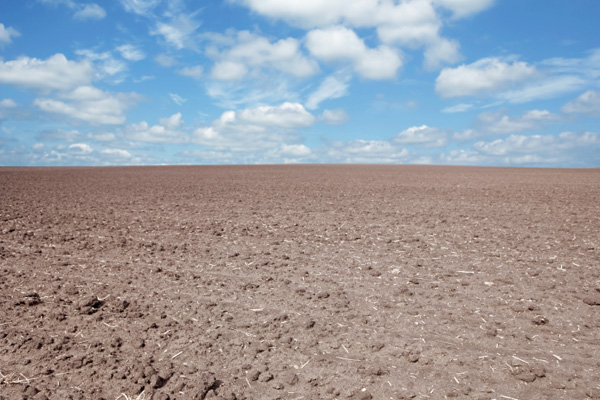3Qs: Back to the dust bowl?

[media-credit name=”Photo by Mary Knox Merrill” align=”alignleft” width=”150″] [/media-credit]
[/media-credit]
The western and southern United States is currently experiencing the worst drought since 1988, prompting the U.S. Department of Agriculture to declare a federal disaster area in 1,300 counties across 29 states. Drought, says civil and environmental engineering professor Auroop Ganguly, has a major impact on food production and freshwater security, in addition to personal safety, which has been impaired by wildfires sparked by the lack of precipitation. We asked Ganguly to explain the effects of climate change on drought and its impact on the environment.
3 The western and southern United States is currently experiencing the worst drought since 1988. We asked Auroop Ganguly, a professor of civil and environmental engineering, to explain the effects of climate change on drought and its impact on the environment.
Is there evidence to suggest that the U.S. will soon experience a major drought?
Droughts are not easy to define, much less to describe or predict with precision. Large droughts, such as the Dust Bowl of the 1930s in the U.S., however, are unmistakable. Conditions such as reduced precipitation over a relatively long period of time and continuously increasing temperatures, which in turn cause more evaporation, transpiration and snowmelt, can lead to droughts. The U.S. has had a particularly warm winter this year and an unusually hot summer, dominated by heat waves across the nation. While certain regions have had normal or more than usual precipitation, other regions have experienced deficits. The West and Southwest, as well as the Midwest and Great Plains, have been experiencing drought conditions and may even be on the verge of major droughts. Increased agricultural demand and population growth or movement may exacerbate the situation. It is still too early to say with confidence, however, that major droughts are in the near future and whether they will rival the Dust Bowl. We are also better prepared to deal with droughts in this country than we were in the 1930s.
Will climate change cause more droughts and floods?
An overall warming environment is expected to cause more intense and more frequent hydro-meteorological extremes. The possibility of more severe droughts and floods in different regions of the globe is part of what has been called global weirding. These generic statements, however, need to be carefully caveated. We are barely beginning to understand the processes governing heavy rainfall, and our understanding of droughts and their triggers are rather limited. Land-atmosphere and surface hydrology processes within the climate change context are the primary sources of uncertainty.
Observational analyses already point to severe water stress in regions across the globe: massive drying in western and southwestern U.S., desertification of Spain and Portugal, and rapid depletion of groundwater in India. Climate models are pointing to future droughts in regions such as the western U.S. with increasing confidence, but large uncertainties continue to exist in other regions, such as the Midwest and Southeast.
Increasing trends in heavy rainfall and floods have been observed in regions across the globe, and climate models predict continued increase across the land regions of the extratropics. Prediction skills typically decrease with higher precision, however, and uncertainties tend to be larger over the tropics and subtropics.
What are the potential effects of major droughts, and how can we take precautionary measures to limit their damage?
Major droughts can have devastating consequences across sectors ranging from food and freshwater security to energy production and ecology. Ultimately, human well-being is adversely affected, leading to the possibility of migrations and even loss of lives. In a globalized world, the impacts of regional droughts may be more immediately felt across the globe. Thus, long-lasting and intense droughts in the U.S. Midwest, which is sometimes hailed as the breadbasket of the world, can have severe implications for national and global food security. In addition, drought conditions are currently prevalent in many regions across the globe.
Poorer sections of society are usually the least able to adapt and hence most likely to suffer from droughts and other hazards, while richer societies may have more to lose in terms of assets. Precautionary measures typically need to be region and situation specific. Thus, in the Midwest, lessons learned from the Dust Bowl era have led to changes in farming and cultivation practices. In certain areas, regional planning and urbanization may be important factors.
Mounting evidence suggests that curtailing fossil-fuel emissions may directly reduce the possibility of major droughts in the future. Irrespective of any links with climate change, however, regional droughts will continue to occur, global population will increase and lifestyles will continue to grow more demanding. Adaptive management and mitigation at regional scales will, then, be necessary.





